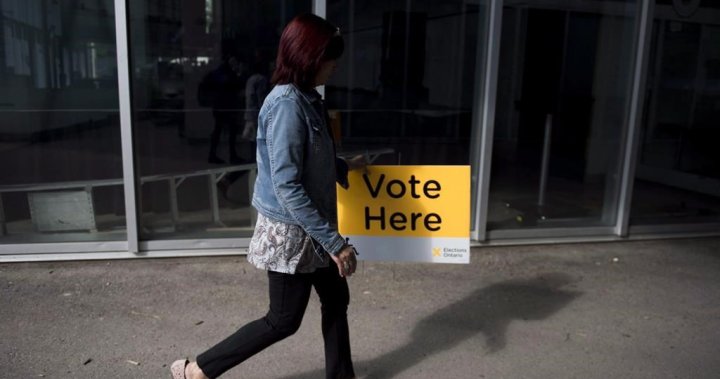Canada
‘Do youth still care?’ How to get the youth to vote more in Ontario

The Growing Disengagement of Young Voters in Ontario: Understanding the Challenges and Solutions
Introduction: The Paradox of Youth Disengagement in Ontario
Young Ontarians, despite facing pressing issues such as student debt, job insecurity, and housing unaffordability, continue to have the lowest voter turnout of any demographic. According to Elections Canada data, voter turnout among 18- to 24-year-olds dropped to just 47% in the 2021 federal snap election, highlighting growing concerns about voter engagement. This trend raises critical questions about why young people, who are directly impacted by provincial policies, are not participating in the democratic process. Jaden Braves, the 16-year-old CEO of Young Politicians of Canada, points to a lack of hope and mistrust in the political system as key factors. “Young people don’t see the point in voting because they feel political parties fail to take action,” he says. This sense of disillusionment and disengagement is reflected in a survey conducted by his organization, which found that 70% of youth actively advocate for issues they care about but do not vote. The gap between activism and voting underscores a deeper issue: many young people believe their votes will not lead to real change.
The Role of Social Media in Shaping Political Awareness and Disengagement
Social media plays a significant role in shaping political awareness, with 40% of Ontario students getting their news from platforms like TikTok. However, while social media can increase awareness, it also fosters negativity and misinformation, contributing to voter disengagement. Braves notes that social media is not a platform for solutions but often amplifies negativity, creating a sense of hopelessness among young people. Political science experts like Nelson Wiseman, a professor emeritus at the University of Toronto, agree that social media can create an illusion of engagement. “People may feel like they’re participating by sharing posts or commenting online, but that doesn’t often translate to real-life action,” he says. This disconnect between online activism and offline voting highlights the challenges of leveraging social media as a tool for meaningful political engagement.
The Disconnect Between Provincial Policies and Youth Priorities
Young people in Ontario are often disconnected from provincial policies, even though these policies directly impact their lives. Wiseman observes that while adults are more concerned about the political situation, young people are less likely to see politics as relevant to their daily lives. This disconnect is further exacerbated by the lack of civics education and awareness of the voting process. Braves emphasizes that civic literacy is crucial for fostering engagement but notes that civics education in Ontario is limited to Grade 10, leaving many young people without a strong foundation in political awareness. This systemic gap discourages younger voters from participating in elections, as they may feel ill-equipped to navigate the political system.
The Impact of Technology and Access to Political Information
The impact of technology on political engagement is a double-edged sword. While social media can increase awareness, it can also redirect attention away from political issues, reducing the likelihood of voting. Wiseman warns that technology contributes to the fragmentation of information, making it harder for young people to access reliable political news. Additionally, recent disruptions, such as the meta-ban on Canadian news, have further limited access to political information. This digital divide not only affects voter turnout but also perpetuates the cycle of disengagement among young people.
The Need for Systemic Change and Youth-Centric Policies
Experts like Semra Sevi, a political science professor at the University of Toronto, argue that addressing youth disengagement requires systemic change. “Voter turnout is important because it reflects a healthy democracy,” she says. “Voting allows young people to advocate for issues they care about, such as education, climate change, housing, and job opportunities.” However, Sevi notes that political campaigns often focus on older demographics, neglecting the concerns of young voters. To reverse this trend, she suggests that politicians must prioritize digital outreach and incorporate youth perspectives into their policies. Expanding civics education, making voting more accessible, and ensuring that campaigns target young voters’ concerns could help increase turnout.
The Road Ahead: Can Young VotersShape Ontario’s Future?
As Ontario’s next election approaches, the question of whether young voters will turn out remains unresolved. The long-term consequences of low voter turnout among young people are significant, as their priorities risk being ignored by politicians. Sevi warns that when young people don’t vote, their voices are excluded from the political process, leaving them without a stake in the decisions that shape their future. Wiseman adds that some political parties may even benefit from low voter engagement, as they perform better in low-turnout elections. However, Braves remains hopeful that systemic changes, such as improved civics education and more accessible voting, can empower young people to reclaim their political power. By addressing the root causes of disengagement, Ontario’s youth can become a force for change, ensuring that their voices are heard in the democratic process.